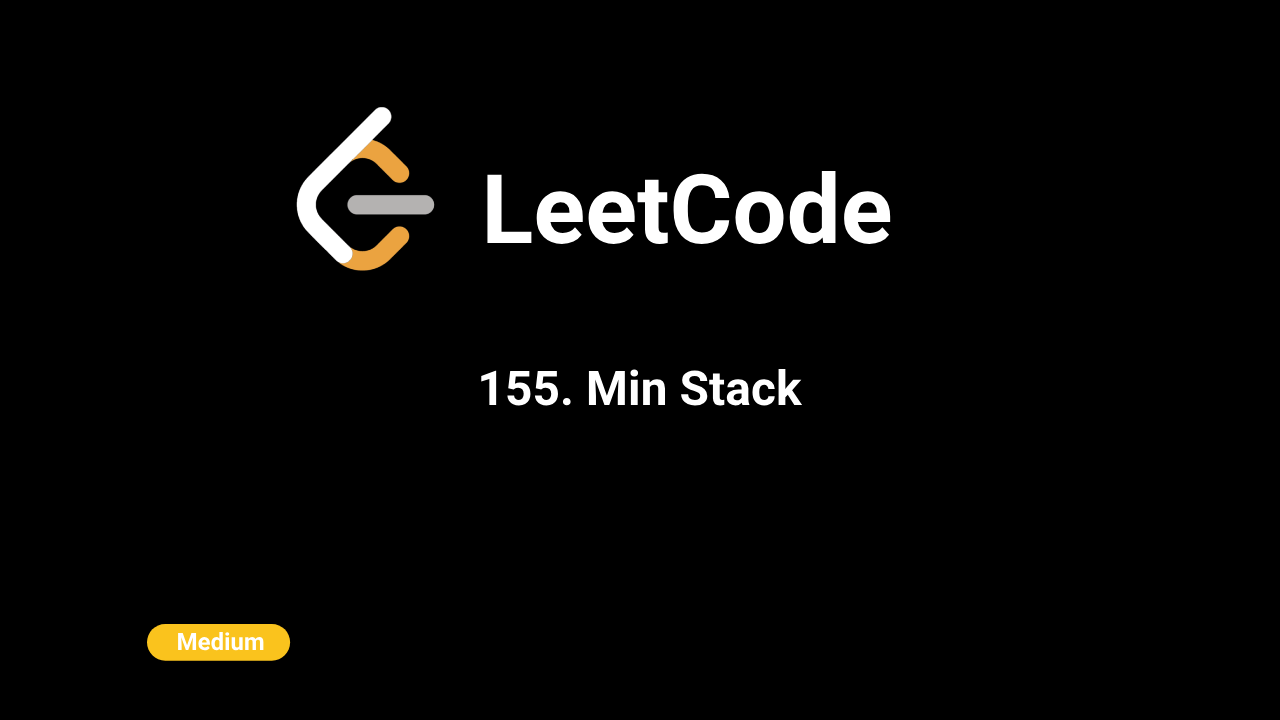🎨Now live: Try our Free AI Image Generation Feature

Intuition
To achieve O(1) time complexity for both push, pop, top, and getMin operations, we can use an auxiliary stack to keep track of the minimum elements. By maintaining this auxiliary stack alongside the main stack, we can efficiently retrieve the minimum element whenever required without the need for scanning the entire stack.
Approach
- Initialize Data Structures:
- Use two lists (
dataandmin_stack) where: -datastores all pushed elements. -min_stackkeeps track of the minimum elements encountered so far. - Push Operation (
push(val)): - Appendvalto thedatastack. - Ifmin_stackis empty orvalis less than or equal to the top ofmin_stack, pushvalontomin_stack. - Pop Operation (
pop()): - Pop the top element fromdata. - If the popped element equals the top ofmin_stack, also pop frommin_stack. - Top Operation (
top()): - Return the top element ofdatawithout removing it. - Get Minimum Operation (
getMin()): - Return the top element ofmin_stack, which represents the current minimum element in the stack.
Complexity
Time Complexity:
push(val),pop(),top(), andgetMin()operations all run in O(1) time complexity because each operation directly accesses or manipulates the top elements of the stacks (dataandmin_stack).
Space Complexity:
- O(n), where n is the number of elements in the stack. The auxiliary
min_stackcan store additional elements equal to the number of elements in the main stack (data), resulting in linear space complexity relative to the number of operations performed.
Code
C++
class MinStack {
private:
stack data_stack;
stack min_stack;
public:
MinStack() {
}
void push(int val) {
data_stack.push(val);
if (min_stack.empty() || val <= min_stack.top()) {
min_stack.push(val);
}
}
void pop() {
if (!data_stack.empty()) {
if (data_stack.top() == min_stack.top()) {
min_stack.pop();
}
data_stack.pop();
}
}
int top() {
return data_stack.top();
}
int getMin() {
return min_stack.top();
}
}; Python
class MinStack:
def __init__(self):
self.data = []
self.min_stack = []
def push(self, val: int) -> None:
self.data.append(val)
if not self.min_stack or val <= self.min_stack[-1]:
self.min_stack.append(val)
def pop(self) -> None:
if self.data:
popped = self.data.pop()
if self.min_stack and popped == self.min_stack[-1]:
self.min_stack.pop()
def top(self) -> int:
if self.data:
return self.data[-1]
return -1
def getMin(self) -> int:
if self.min_stack:
return self.min_stack[-1]
return -1Java
class MinStack {
private Stack dataStack;
private Stack minStack;
public MinStack() {
dataStack = new Stack<>();
minStack = new Stack<>();
}
public void push(int val) {
dataStack.push(val);
if (minStack.isEmpty() || val <= minStack.peek()) {
minStack.push(val);
}
}
public void pop() {
if (!dataStack.isEmpty()) {
int removed = dataStack.pop();
if (removed == minStack.peek()) {
minStack.pop();
}
}
}
public int top() {
return dataStack.peek();
}
public int getMin() {
return minStack.peek();
}
} JavaScript
var MinStack = function () {
this.stack = [];
}
MinStack.prototype.push = function (val) {
this.stack.push(val)
}
MinStack.prototype.pop = function (val) {
this.stack.pop();
}
MinStack.prototype.top = function (val) {
return this.stack[this.stack.length - 1];
}
MinStack.prototype.getMin = function (val) {
if (!this.stack.length) {
return 0;
}
let min = this.stack[0];
for (var i = 1; i < this.stack.length; i++) {
min = Math.min(min, this.stack[i])
}
return min;
}